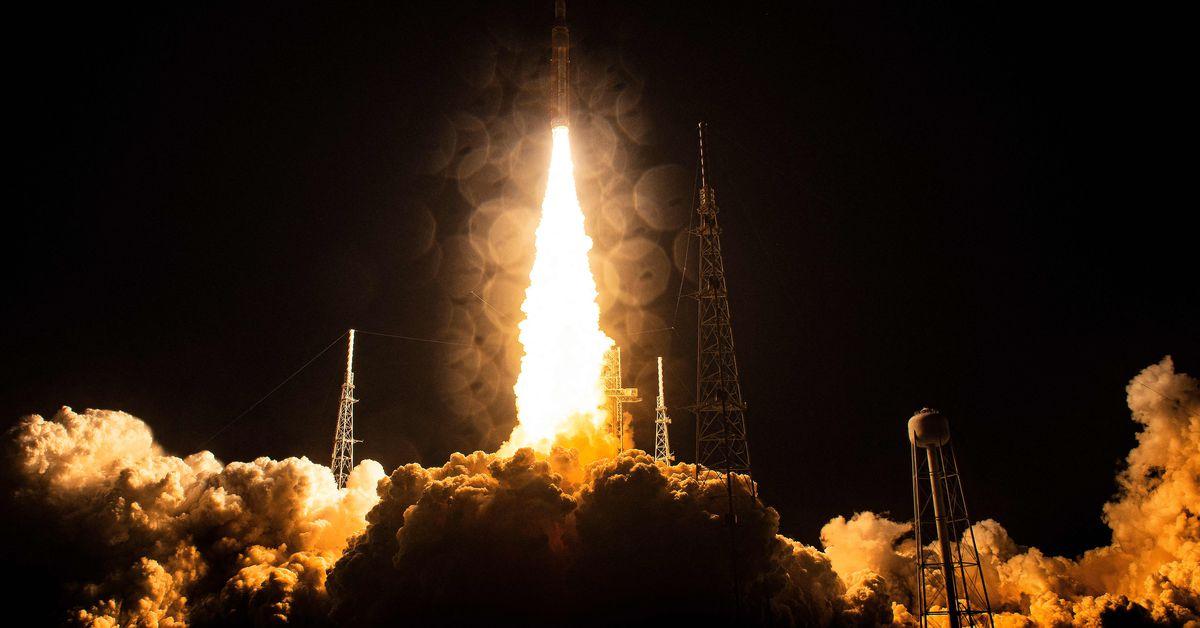Be warned: “Extensive” travel required. And your eyesight may never recover.


Being an astronaut comes with unique occupational challenges. What other job puts you at risk for your eyeball physically changing shape in microgravity, leading to permanent changes in eyesight? Or how about this hazard: Without the force of the Earth beneath our feet, bones become more brittle and muscles atrophy.
And the food, well, it sucks — by many accounts. (Which is not entirely the fault of the manufacturers of space food. In microgravity, food just tastes blander. Being in space does things to bodily fluids that make one feel like they always have a bit of a head cold.)
But despite the challenges, thousands still look to the stars and dream of themselves among them. The last time NASA opened up applications to become an astronaut in 2021, 12,000 people applied. And on Tuesday, just 10 people from that application pool graduated from NASA’s astronaut training program.
Now, the space agency is accepting applications again for its next class, and you can start your very own interstellar career by beginning with this form. The position pays a little more than $152,000 a year — not bad, right? But telework is not permitted (bummer), and the listing says “extensive travel required.” (The moon is nearly 239,000 miles away. Extensive!) The job posting does read like a kindergartner’s career wish list:
Major duties of the astronaut position include, but are not limited to:
Conduct operations in space, including on the International Space Station (ISS) and in the development and testing of future spacecraft.
Perform extravehicular activities (EVA) around spacecraft, space stations, and on planetary surfaces, use the robotic remote manipulator system, and participate in the development and testing of future extravehicular and robotic activities.
Conduct research experiments (including those on animals), operate as a safe member of an aircraft/spacecraft crew (including flight planning and communications), and perform spacecraft maintenance activities.
....
Serve as the public face of NASA, providing appearances across the country and internationally, and sharing NASA’s discoveries and goals.
But before NASA rockets you to space, you must complete two years of training. One newly graduated astronaut told AFP, the French newswire service, that the class had to spend a week in the Alabama backcountry, working on survival skills. When the final food ration was eaten, “we shared together one final bag of peanut M&Ms,” astronaut Christina Birch told AFP.
Despite the hardships, on the ground and in space, it is an exciting time to be an astronaut. NASA is setting its eyes on returning humans to the moon, with a crewed lunar flyby scheduled for later this year. Future missions might establish a more permanent human presence on the moon, and also help prepare for an eventual crewed mission to Mars. Astronauts are willing participants in an ongoing experiment: Will it be possible for humans to live in space long term? Many questions remain on the physiological and psychological impacts of space on human well-being (such as: how toxic is moon dust?).
If that sounds exciting to you, apply!
But note: Not everyone is qualified to be an astronaut. NASA is looking for people who either have a background as a pilot or have had a previous career in science, engineering, or medicine. “Interviews, medical and psychiatric screening and additional assessments will be required for applicants under final consideration,” the job description states.
Further reading: Life in space
Scientists are grappling with our biggest limitation in spaceflight: our own bodies Space is deadly. NASA’s Artemis mission will help us learn how to survive it. The top 7 ways a trip to Mars could kill you, illustrated The space station race
The RAM shortage is here to stay, raising prices on PCs and phones
- 8 گھنٹے قبل

Trump’s war on windmills, briefly explained
- 6 گھنٹے قبل
How Week 16 reset the race for the AFC and NFC 1-seeds: Barnwell on the NFL's best teams
- 7 گھنٹے قبل
PM announces Rs10m each cash reward for victorious U-19 cricket team players
- 14 گھنٹے قبل
Women's AP Top 25 poll reaction: What to know about every team
- 7 گھنٹے قبل
Death anniversary of Malika-e-Tarannum Noor Jehan observed today
- 14 گھنٹے قبل

Bose’s first-gen QC Ultra headphones just hit their lowest price to date
- 8 گھنٹے قبل

Rad Power Bikes files for bankruptcy protection
- 8 گھنٹے قبل
The NHL's best this week: Is Craig Berube on the hot seat in Toronto?
- 7 گھنٹے قبل

What makes the Great Smoky Mountains smoky?
- 6 گھنٹے قبل
What did Cowboys get right in Schottenheimer's first season?
- 7 گھنٹے قبل

Netflix doesn’t stream its ‘Originals’ forever, here are some that may leave in 2026
- 8 گھنٹے قبل






